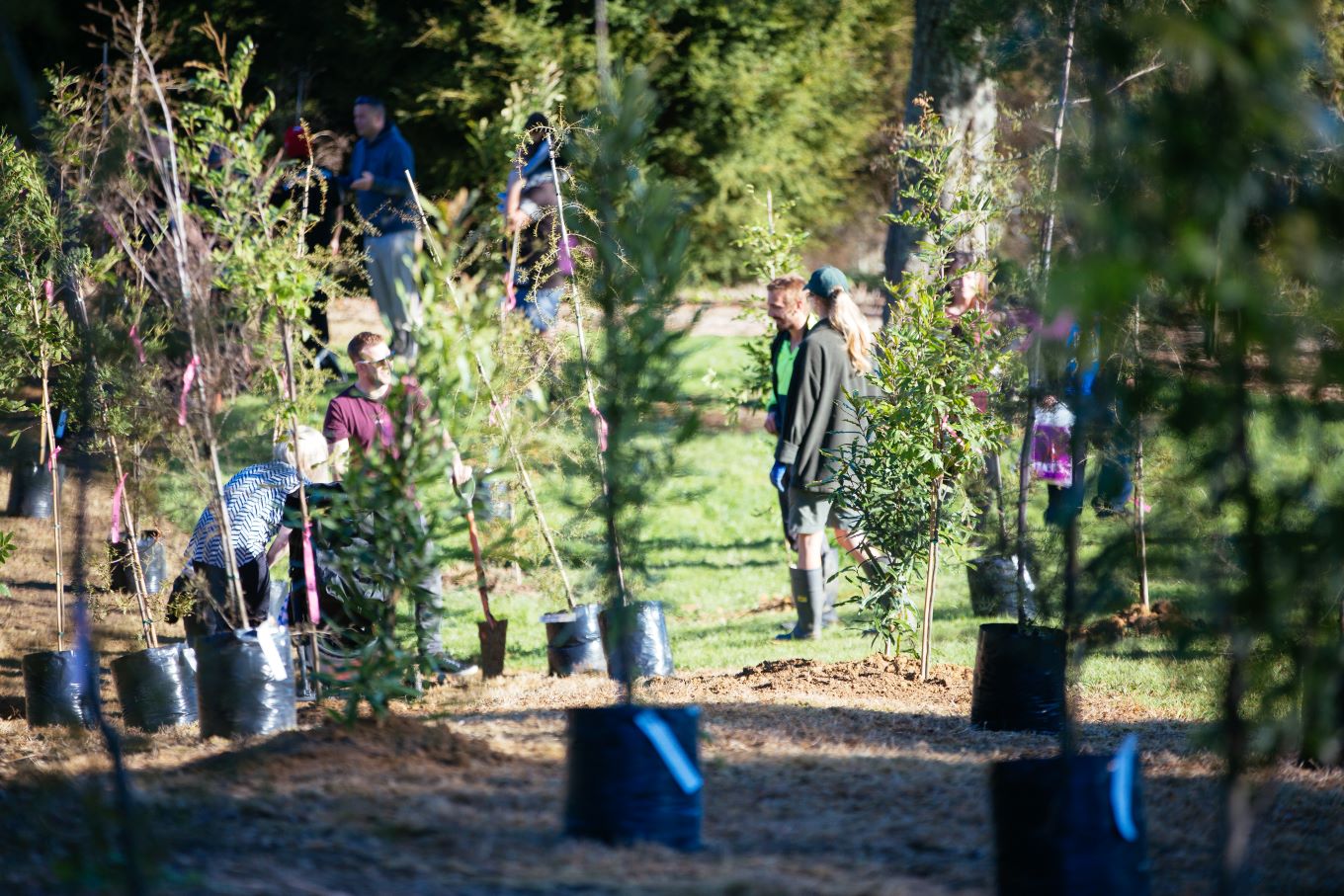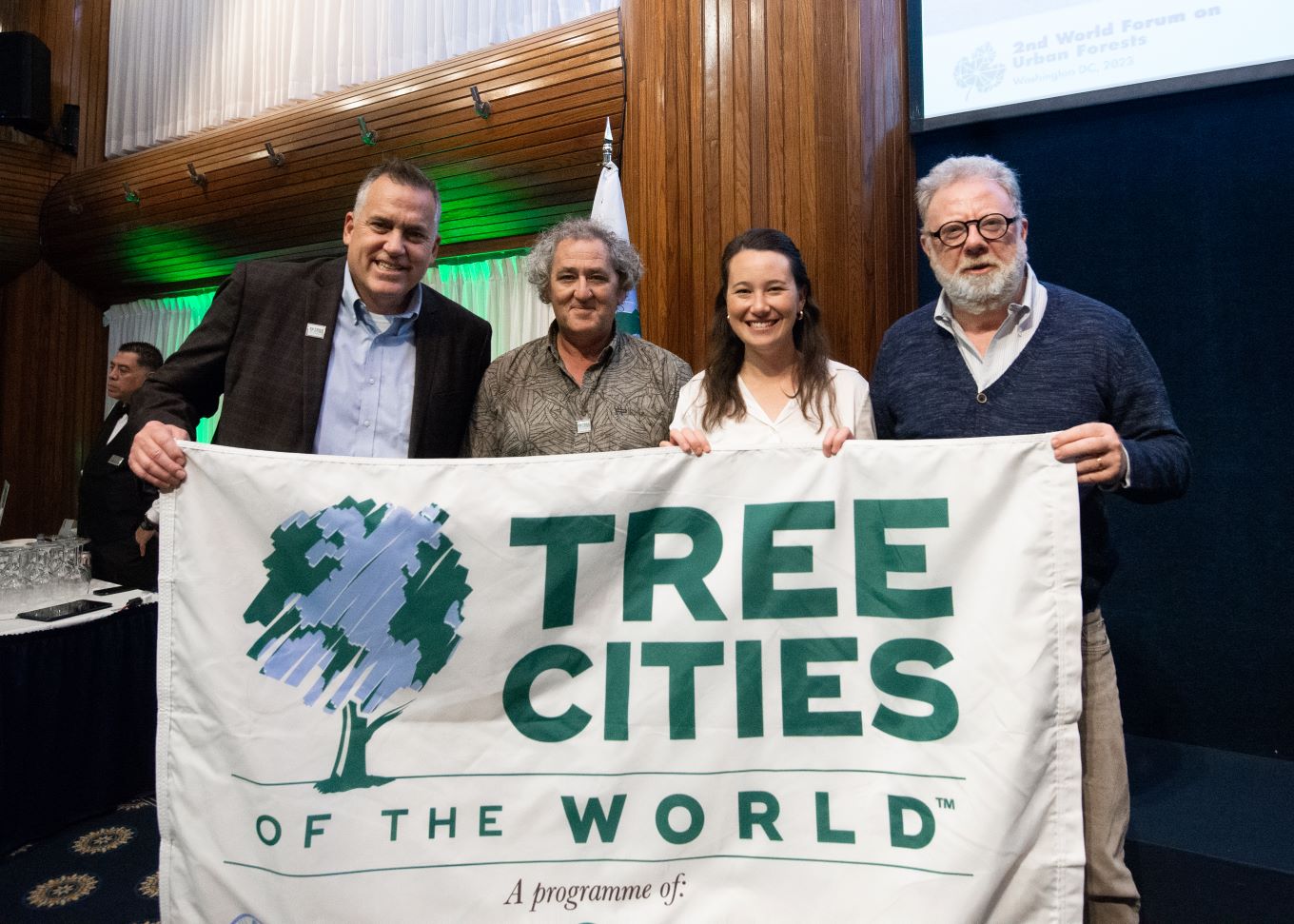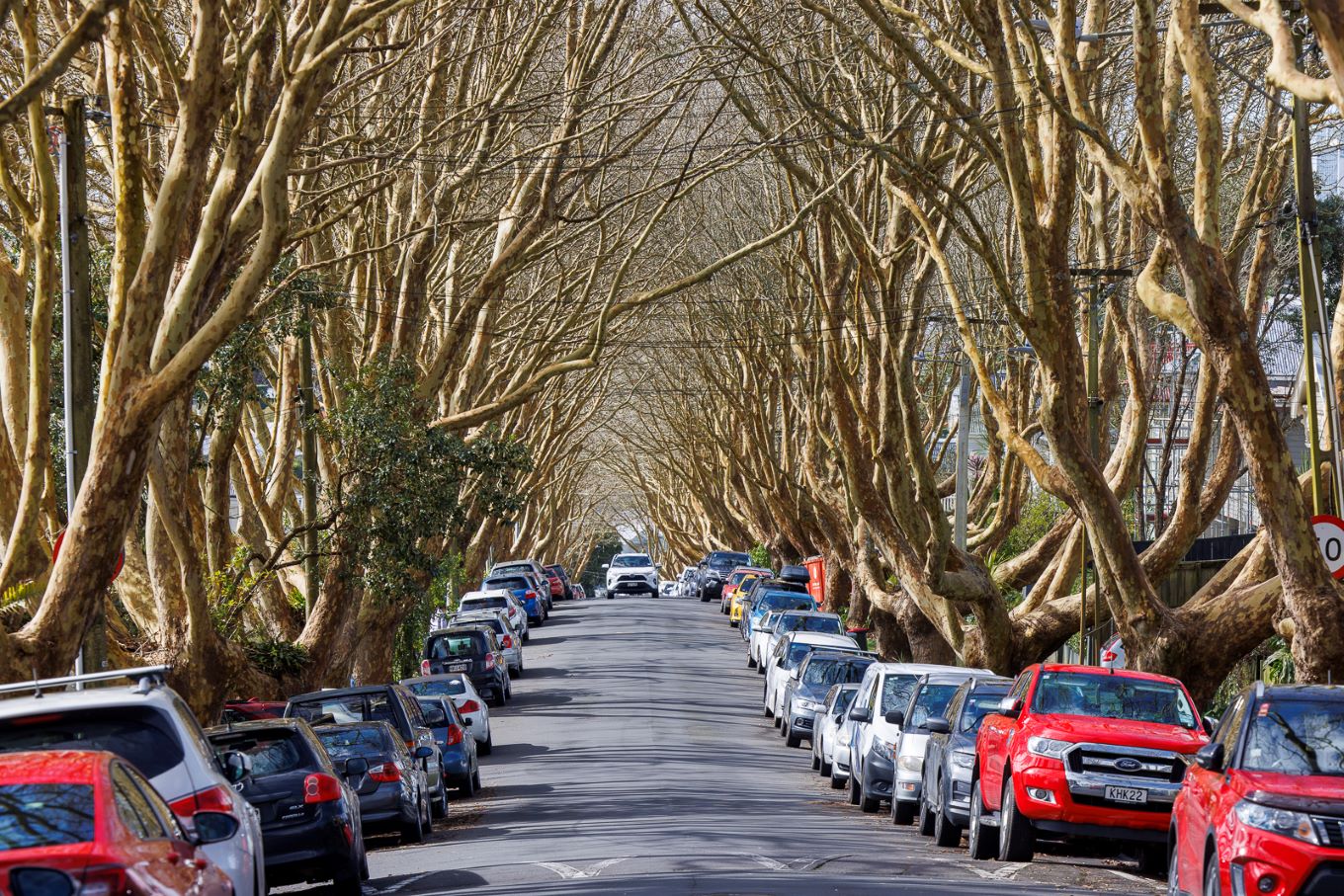Pōhutukawa shading the shores of the Waitematā, soaring kauri in the Waitākere Ranges; heritage London plane trees lining Franklin Road. Tāmaki Makaurau abounds with trees - and now the city has been recognised as a Tree City of the World by the Arbor Day Foundation and the Food and Agriculture Organization of the United Nations.
Auckland has attained this illustrious status for the fourth year running and is joined by Tauranga as another New Zealand city that attained the international accreditation. There are 200 successful cities recognised this year, in the Tree Cities of the World scheme, across 22 countries.
Councillor Richard Hills, Chair of Auckland Council’s Planning, Environment and Parks Committee says he’s proud that Tāmaki Makaurau has been recognised as a Tree City of the World.
“Auckland is filled with trees, in our streets, parks and public places and I’m thrilled we have been recognised for our efforts in increasing and improving our urban ngahere cover. Communities see the benefits of us working with them to plant thousands of mature street trees across our city and hectares of new forest in our regional parks.
“A healthy urban ngahere creates a healthy living environment with many social, cultural, economic, and environmental benefits for communities. Whether it’s shade for children as they walk to school or the reduced emissions and reduced stormwater runoff, planting and protecting trees is crucial for the liveability of our city into the future.”

The Arbor Day Foundation is the world's largest nonprofit membership organisation dedicated to planting trees. The Food and Agriculture Organization (FAO) is a specialised agency of the United Nations that leads international efforts to defeat hunger. Both organisations came together in 2019 to found Tree Cities of the World. The programme is a global effort to recognise cities and towns committed to ensuring that their urban forests and trees are properly maintained, sustainably managed, and duly celebrated.
“Trees are important to people, no matter what country they are from or what language they speak, said Dan Lambe, chief executive of the Arbor Day Foundation.
“We all want to live in a city that is healthy, resilient, and beautiful – trees serve as a common language to make that possible. Being recognised in the Tree Cities of the World programme means that Auckland is committing to go above and beyond to define trees as critical green infrastructure for your citizens.”

Planting trees in a metropolitan area comes with a myriad of benefits beyond the recognition of this programme. Increasing the number of trees in a community can help reduce costs for energy, stormwater management, and erosion control. In addition, the programme provides a network of like-minded city leaders in urban forestry and tree care to celebrate and share best practices to cultivate greenery in the community. Tree Cities of the World aims to create more green spaces in urban areas by recognising the cities that do it well.
To earn Tree Cities of the World recognition, Auckland Council demonstrated its commitment by meeting five programme standards: establish responsibility for the care of trees, set rules to govern the management of forests and trees, maintain an updated inventory or assessment of local tree resources, allocate resources for a tree management plan, and hold an annual celebration of trees to educate residents.
Tree planting programmes
In 2023, Auckland Council planted approximately 750,000 trees and plants across the region and just over 18 hectares have been planted under the Urban Ngahere Programme.
Since the Urban Ngahere strategy’s inception in 2018 approximately 2,000 mature street trees have been planted annually in Tāmaki Makaurau. This number is expected to grow to 5,000 by end of 2024.
Auckland Council facilitates tree planting events as part of ecological volunteer programmes to help boost tree numbers in the city. Mana whenua, schools, volunteers, and community groups plant around 200,000 smaller trees, shrubs and plants each year in local parks and around 300,000 in regional parks, contributing to the annual total number of trees planted across the region.
Sixteen of Auckland’s 21 local boards have adopted local urban ngahere action plans that support the goal of increasing tree canopy cover in road corridors, parks and open spaces and support the prioritisation of locations with low tree canopy for future planting.

Over 500 of our community parks have groups of supporters who care for individual sites. Many of these groups run regular working bees, environmental education events and social gatherings for all ages.
Friends of Parks groups look for a wide variety of skills to support their environmental work, for example, event management, social media, administration, accountancy, and education.
Visit the Tiaki Tāmaki Makaurau / Conservation Auckland website to find a group near you.
We also welcome corporate and community groups to our volunteer programmes. Volunteering in parks is great for team building. For more information email mylocalpark@aucklandcouncil.govt.nz to find a local group or site that needs help with planting and plant releasing projects, annual coastal clean ups, ongoing plant and animal pest control.
For volunteering opportunities in regional parks, please visit the Auckland Council website to find out more.
“On behalf of Parks Community Facilities Staff at Auckland Council I want to give a big shout out to those individuals and community groups who have volunteered to improve the ngahere on public land,” says Taryn Crewe, General Manager Parks and Community Facilities.
“The efforts ongoing help the council increase tree cover on public land which will provide long term benefits to communities.”

Tūpuna Maunga Authority ‘proud to play a part’
The Tūpuna Maunga Authority is made up of 50/50 representation of mana whenua and Auckland Council. The Tūpuna Maunga are some of the most culturally significant sites in Tāmaki Makaurau.
The Authority runs a vegetation restoration programme that includes community planting days, that are set to align with Maramataka (Māori lunar calendar) to promote plant growth in harmony with Te Taiao (the natural world). This year the team are set to plant 35,000 trees throughout winter. The programme aims to restore the native biodiversity across the network of Maunga throughout Tāmaki Makaurau, in-line with the Authority’s vision.
“We are proud to have played a part in Tāmaki Makaurau achieving the status as a Tree City of the World through our tree planting efforts that have seen more than 175,000 native plants planted since 2019,” says Paul Majurey, chair and spokesperson for Tūpuna Maunga Authority.
“Our biodiversity strategy shapes our ecological programme that is designed to protect, restore and enhance the Maunga for generations to come.”


